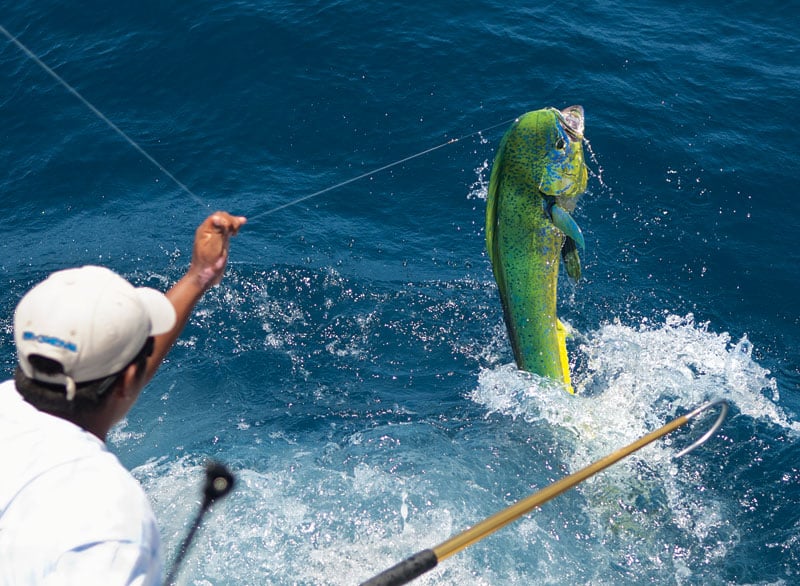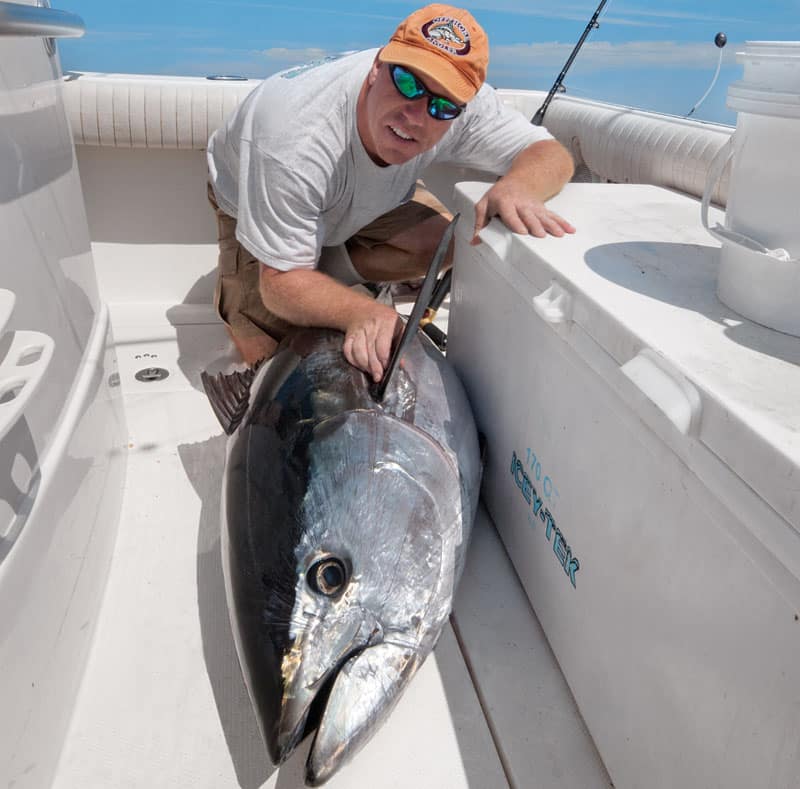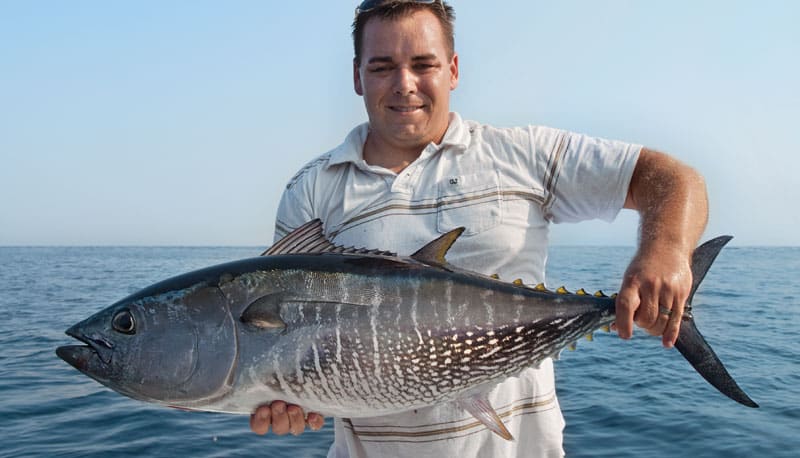
The bluefin bite had been going on for several days in the blue water between the Mudhole and the Hudson Canyon, off New Jersey. Capt. David Goldman of Shore Catch Guide Service enjoyed several days of crazy fishing on jigs and poppers, working the schools of sand eels among a huge gathering of whales, porpoises and bluefin tuna, just outside the color and temperature break.
But the predators took a toll on the forage within a few days. By the time I made the run in my boat, the action had dropped way off, even though the water still looked great. Something had changed, and after scouting the area for a couple of hours, I realized the porpoises were leaving, heading southeast toward an area called Chicken Canyon. This was an important signpost that announced decision time. Tuna often travel in the company of porpoises. Should I hang out in the pretty water and try to scratch out a catch or act on what I saw developing?
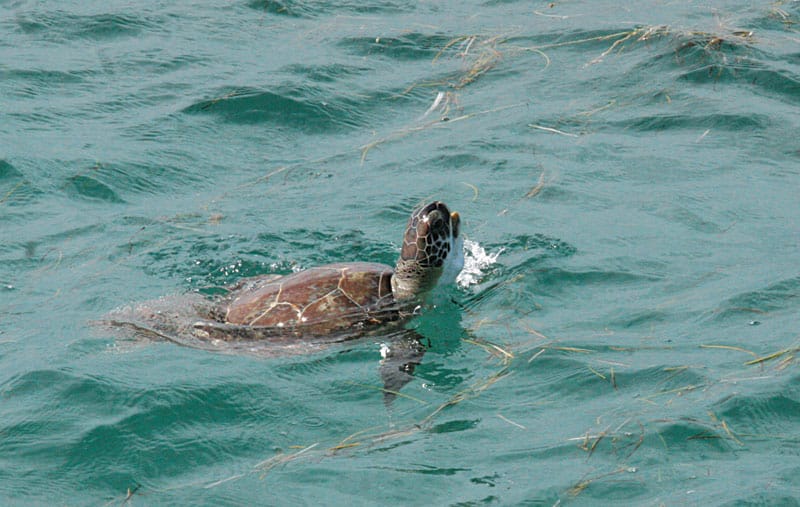
I ran southeast and shut down in the path of a large group of porpoises. As they got close, we tossed flutter jigs near the pod and let them sink. As soon as the jigs dropped beneath the pod, the tuna were on them. We enjoyed fast catch-and-release fishing beneath the pods until it was time to run for shore, our legal one-fish limit on ice. It turned out that the difference between a slow morning and what ended up as a great afternoon was paying attention to the signs unfolding around us.
Knowledgeable captains know that following obvious signposts as they head offshore puts them in the right neighborhood. Information gleaned from sea-surface-temperature, chlorophyll, water-color and current charts, as well as on-water observations and catch information, contributes. Even if you don’t have a network of active captains to work with, online fishing reports and satellite forecasting services can provide a starting point as you leave the dock. Then it’s a matter of maintaining awareness of what is happening around you once you’re on the scene.
Signposts fall into two general categories, visual and electronic. Obvious visual clues include rip lines, slicks, weed lines, birds and surface activity. The key is keen observation by everyone on board. When you’re trolling, there always should be at least one pair of eyes on the pattern, watching for approaching fish, but other crew members should be watching the horizon in front, behind and to either side of the boat. Even when your homework puts you in an area with good water, visual clues help narrow the search dramatically.
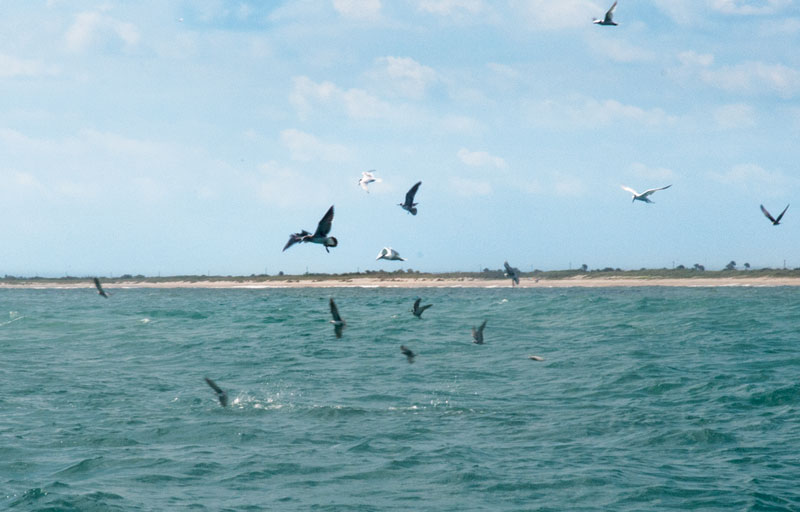
For the Birds
Some clues are harder to interpret than others. Last year, when I fished with Capt. Steve Baksa on the Sarah B out of Seaside Park, New Jersey, we moved into Carteret Canyon late in the day and found beautiful blue water and thousands of shearwaters. Some were flying but not diving. Most were just sitting on the water. Then I noticed some of the birds poking their heads underwater, watching something below. As we moved near those birds, we started marking baitfish. Then the birds took to the air, an indication that the bait was being pushed to the surface, and it wasn’t more than a few minutes before we were hooked up.
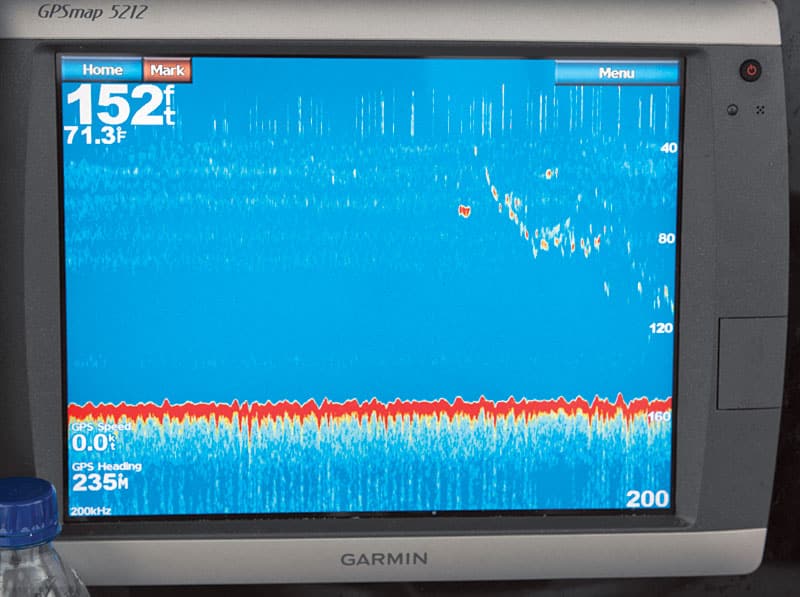
The Eyes Have It
Storm petrels, those tiny black birds that seem to appear out of nowhere when you start a chum slick, can be indicators of feeding taking place below the surface. On a spring foray for bluefin aboard Roger Lehman’s 32-foot center console, Toypedo, we spotted hundreds of petrels dipping their beaks along the edge of a rip line. When we took a closer look, we found tuna working baitfish just beneath the surface. Trolling a spread of large ballyhoo under blue-and-white Ilanders was all it took to get the rods bent and put a pair of hundred-pound tuna in the boat.
I was riding with Capt. Jon Duffie on the Billfisher last summer out of Ocean City, Maryland, when we spotted an area alive with petrels through the binoculars. “When you see a large concentration of tuna chicks working so actively, it’s a sure sign fish are feeding below,” Duffie said as we drew closer to the activity. “They pick up tiny pieces of the baitfish that float to the surface.” As we trolled into the pandemonium, a troop of white marlin rose behind the dredges and attacked the ballyhoo in the pattern. We had several multiple hookups in that area in short order. A word to the wise — keep high-quality binoculars on board, and use them.
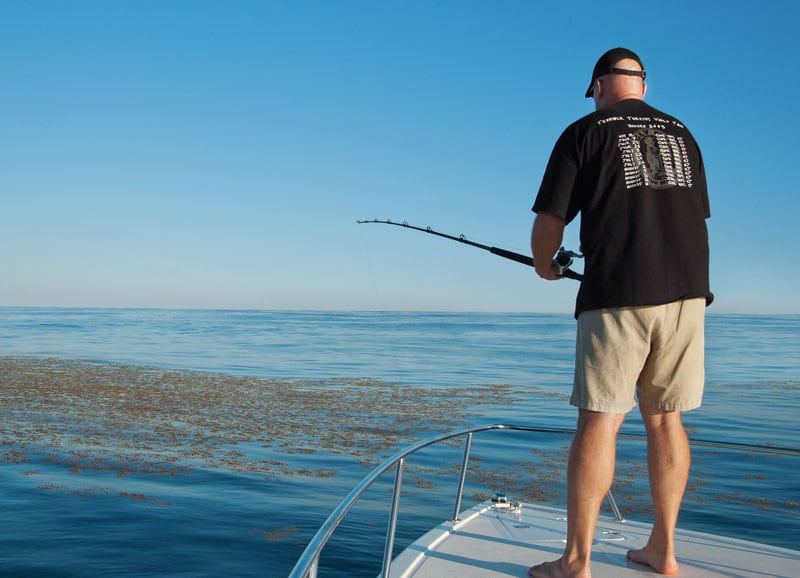
Weed lines forming along rip lines created by currents and the wind, are obvious signposts, and excellent visual clues to the location of temperature breaks. But not all productive rips create weed lines, and any visually significant rip should be investigated. Over canyons from the mid-Atlantic and the Bahamas to the West Coast, offshore currents striking underwater structure create upwellings, and the visual clue to their whereabouts is frequently a surface rip. A lot of years ago, I was fishing with Fred Archer out of Dana Point, California, trolling for sharks. It wasn’t until we started working a rip line created by current striking the walls of the La Jolla Canyon that the threshers started knocking on our lures. Remember, upwellings bring nutrient-rich water to the surface, starting a cycle of life that begins with a plankton bloom that attracts baitfish like anchovies, sardines, halfbeaks and flying fish. Find the forage, and the game fish are rarely far away.
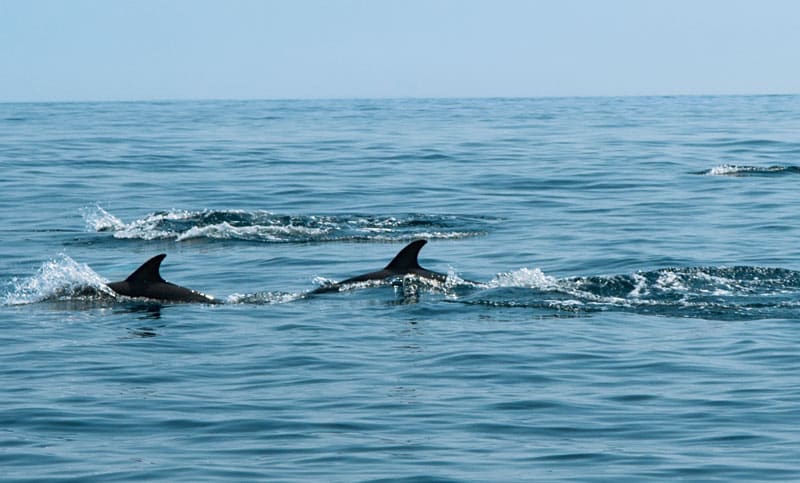
Modern Methods
Electronics reveal signposts you might otherwise miss. Radar can show you birds working at distances beyond the power of your eyes. It can also help you locate other boats that might be on a good bite, although staying in contact with a network of friends is a better idea. A VHF radio equipped with DSC lets you exchange information without being overheard on an open channel.
Sonar is of critical importance offshore. In water from 100 to 300 feet deep, sonar, combined with bathymetric charts, reveals subtle bottom features that hold bait and tuna. The last few seasons produced a consistent bluefin tuna bite around a wreck, the Atlantic Princess, 40 miles off central Jersey. The fish were never really on the wreck but were feeding on sand eels over the nearby sand lumps. It was a game of find the sand eels. With Capt. Dave Schunke, aboard his 39-foot center console Insufishent Funds, I watched an expert find the signs. He started at the last known lump where fish were caught and ran from lump to lump in an ever-widening circular search pattern until he marked bait or tuna on the depth finder. It rarely took more than an hour or two to find the bait, along with the tuna that followed along.
On a tuna trolling trip some years back, on a friend’s 38-foot sport-fisher, we marked a large pod of bait holding at 300 feet near a canyon edge and rip line late in the afternoon. We worked the area into the early evening without a bite, but with each pass, the bait seemed to be moving in a little shallower. Then, just before dusk, the bait and tuna marks were up to 50 feet, and on the next pass, all the rods in the spread went down and we were covered up by longfin! The bait on the sonar was the signpost, and all it took was a little per-sistence to fill the fish box in short order.
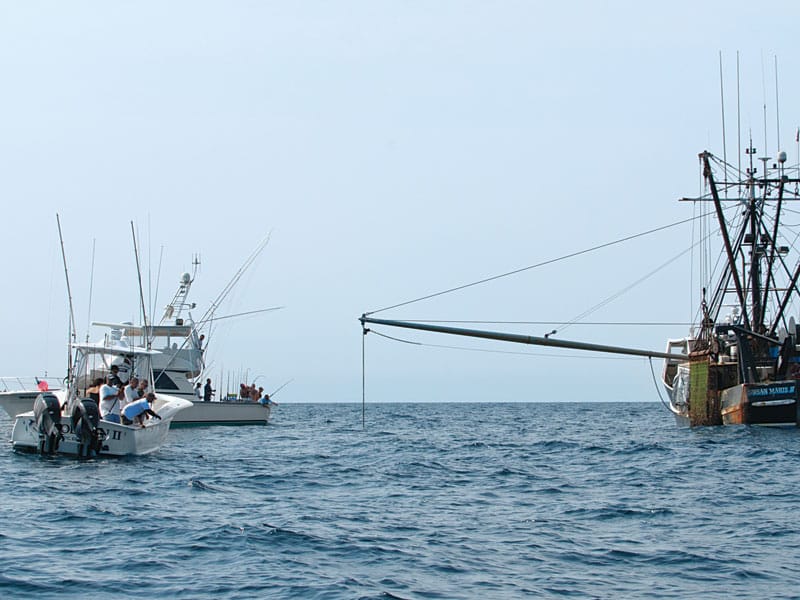
Some signposts may take years to figure out. Recently I ran into Capt. Tim Tanghare of Clean Sweep Sportfishing, in Cape May, New Jersey, someone with whom I fished for bluefin a few years back, when the action was taking place between Cape May and Ocean City, Maryland. We talked about how the tuna had been hard to find down his way the past couple of years but had been plentiful where I fish in the northern portion of the state. I suggested it was due to the concentrations of sand eels up my way the past few years, and he agreed that was part of the equation. But then he pointed out there were still plenty of sand eels to the south. So what had changed?
“It’s the scallop boats,” Tanghare said. “Bluefin are drawn to them like magnets, and when the fleet moved north, dictated by the fishery management plan, the bluefin shifted north with the boats.”
Think of bluefin tuna as Pavlov’s dogs, trained to take advantage of the free lunch provided when the crew shucks at sea. Some of the most amazing bluefin bites I’ve seen took place around scallop boats, but when the scallopers are not actively working, the tuna go looking for other forage — sand eels, sardines, whatever is in the area.
Signs of life, signposts to successful fishing, are there for you to take advantage of if you stay aware and make use of the information they provide. Look sharp, take time to interpret what you observe and act accordingly. And watch your catches soar.
